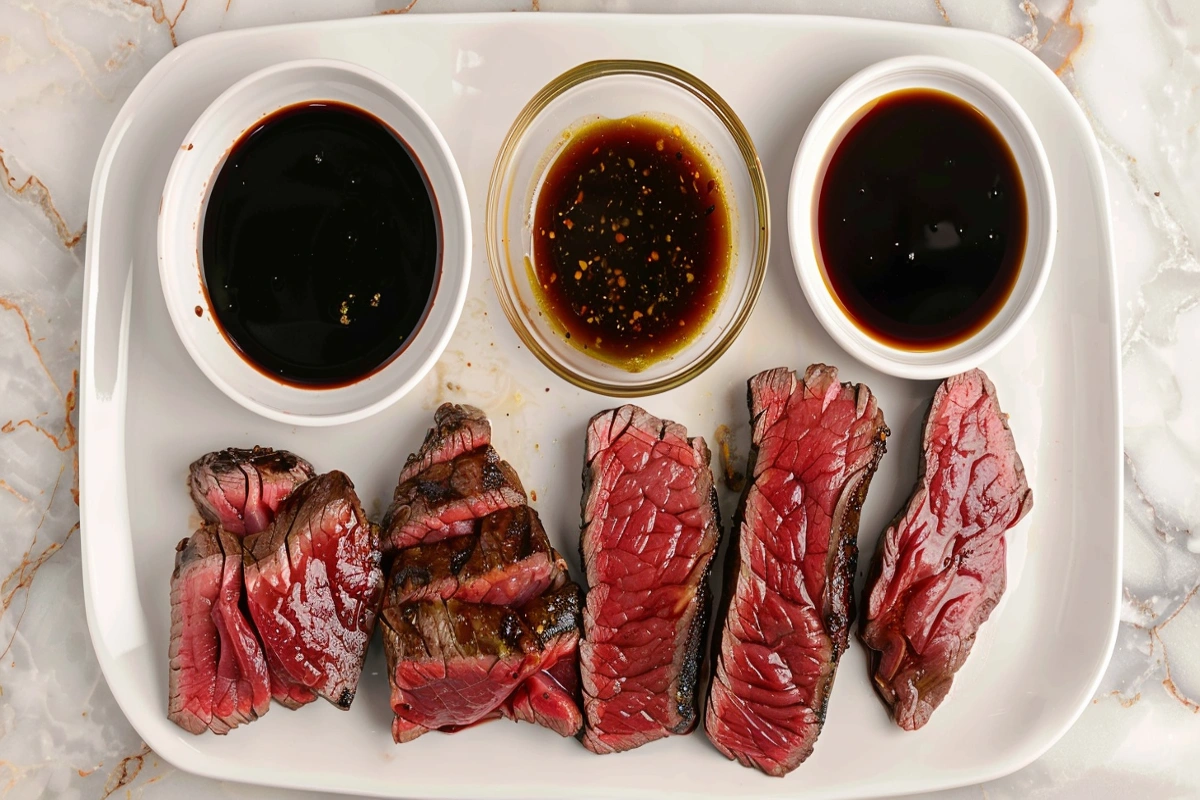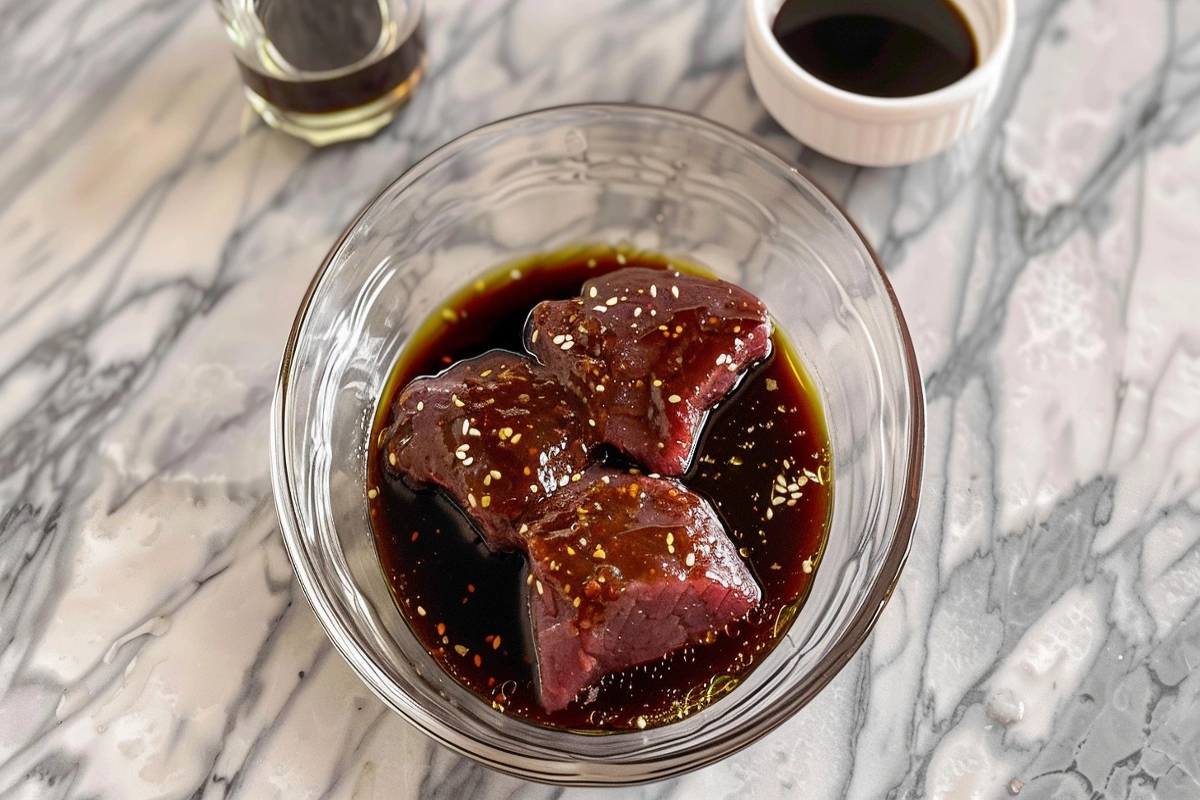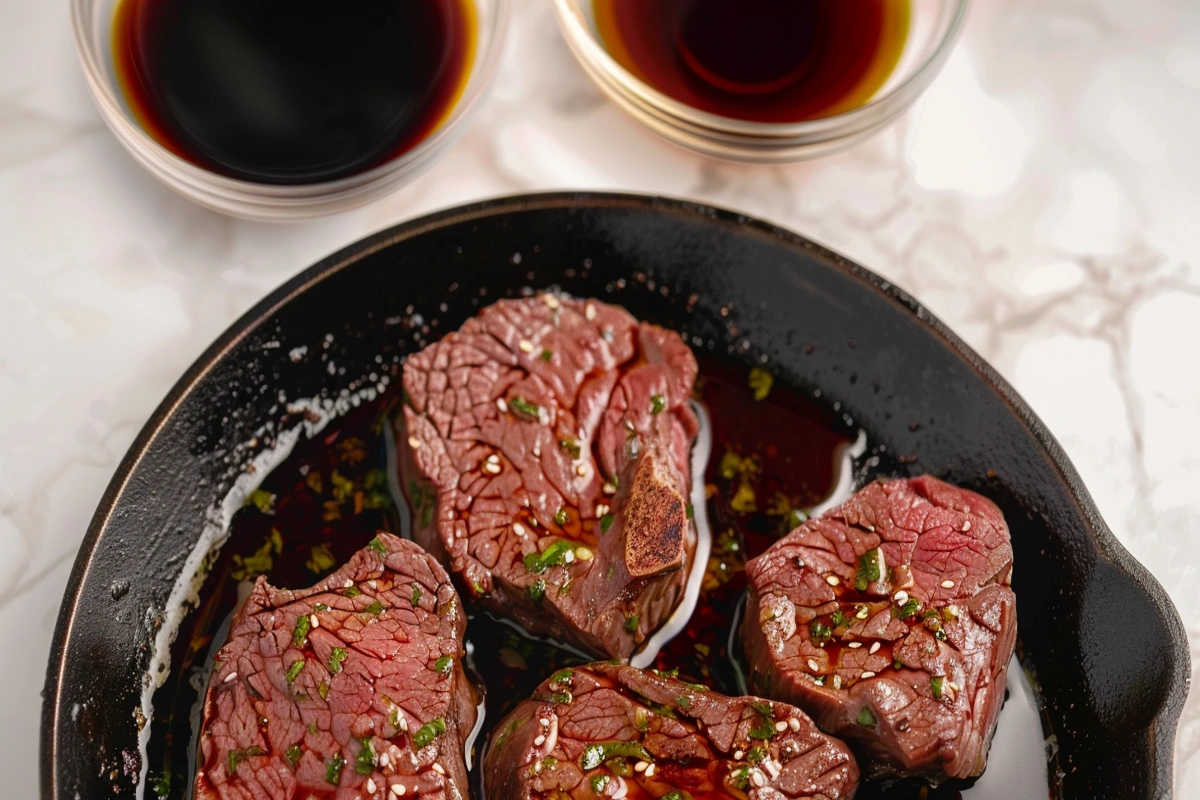Introduction to What Are The 3 Basic Components Of Marinating
Marinating is a versatile and effective culinary technique that has been used for centuries to enhance the flavor, texture, and aroma of foods. Whether you are preparing meats, seafood, or vegetables, understanding the fundamentals of marinating can elevate your dishes from ordinary to extraordinary. In this comprehensive guide, we’ll delve deep into the three basic components of a marinade, explore the science behind marinating, and offer expert tips to help you create the perfect flavor combinations. Additionally, we’ll dispel common myths, discuss how to pair marinades with different food types, and answer frequently asked questions to ensure that you get the most out of your marinating experience.
The Science Behind the 3 Basic Components of Marinating
Marinating works by using a blend of ingredients to alter the chemical structure of food. The goal is to impart flavor, change the texture, and sometimes even extend the shelf life of the food. Understanding the three main components—acid, fat, and flavoring agents—will help you craft marinades that are balanced and effective.
The Chemistry of Marinades
The three essential components of a marinade—acids, fats, and flavorings—each play a unique role in the marinating process. By breaking down proteins, infusing flavors, and preserving moisture, a good marinade can transform the toughest cuts of meat into tender, flavorful dishes. The chemical reactions that occur when food is exposed to different components are critical to understanding the impact of marinating on texture and taste.
For instance, acids work to denature proteins in meats, making them more receptive to absorbing flavors. Fats, on the other hand, help to carry and distribute flavor molecules, ensuring that every bite is rich and satisfying. Finally, the aromatics in marinades create unique taste profiles by infusing their essential oils and flavors into the food.
How Marinating Differs for Various Foods
It’s important to note that different foods react differently to marinating. While meat benefits from longer marination to break down tough muscle fibers, vegetables and seafood require a shorter duration to prevent over-softening. For example, a firm vegetable like a potato might need a more intense marinade and longer time, while delicate fish can become overpowered or “cooked” in just a short period.
Understanding the 3 Basic Components of a Marinade

Every successful marinade consists of three core components: acid, fat, and flavoring agents. Let’s explore each one in greater detail.
1. The Acidic Component of the 3 Basic Components of Marinating
Acids play a pivotal role in tenderizing meat and adding a bright, tangy flavor. They work by breaking down the connective tissues and proteins, making meats softer and easier to chew. Common acidic ingredients include:
- Vinegar (white, apple cider, or balsamic)
- Citrus juices (lemon, lime, or orange)
- Wine or beer
- Buttermilk or yogurt
The Science Behind Acids
Acids work at a molecular level to unravel the proteins in meat. This process, known as protein denaturation, exposes more of the muscle’s internal structure, making it easier for the marinade to penetrate. However, caution is needed when using acids. Too much acid or a marinade that’s left too long can cause the food to become mushy or excessively sour.
For example, a classic lemon-garlic marinade for chicken might include ¼ cup of lemon juice, ½ cup of olive oil, and a handful of minced garlic. The lemon juice will break down the muscle fibers just enough to make the chicken juicy and tender without altering its texture.
Recommended Acid Ratios
The ideal ratio for marinades is generally 1 part acid to 3 parts fat. This ensures that the acid is potent enough to tenderize but not so strong that it overpowers other flavors.
2. The Fat Component
Fats are an essential part of any marinade because they carry and distribute flavors evenly. Fats also create a barrier on the surface of the meat, helping to lock in moisture during the cooking process. Common fats used in marinades include:
- Oils: Olive oil, sesame oil, vegetable oil
- Dairy: Yogurt, buttermilk, sour cream
- Nut oils: Almond oil, walnut oil
The Role of Fat in Flavor Absorption
Fats help to coat the food, allowing other flavors to stick more effectively. This is especially important for lean cuts of meat, which can dry out quickly without the presence of oil. For example, a yogurt-based marinade for lamb not only tenderizes the meat but also creates a creamy coating that helps seal in the flavors of the spices.
In addition to carrying flavors, fats also serve as a neutral base, balancing the intensity of acidic components. If a marinade is too acidic, adding more fat can help mellow out the sharpness.
Types of Fats to Use
Different fats impart different flavors and textures. For instance, olive oil is excellent for Mediterranean-style marinades, while coconut milk is ideal for tropical dishes. Choose your fats based on the cuisine and desired mouthfeel.
3. The Flavoring Agents
Flavoring agents are what give each marinade its distinct character. They include herbs, spices, aromatics (such as garlic, onions, and shallots), and sweeteners like honey or sugar. These elements allow you to tailor a marinade to specific cuisines or personal preferences. Popular flavoring agents include:
- Herbs: Basil, thyme, rosemary, oregano
- Spices: Cumin, coriander, paprika, black pepper
- Sweeteners: Honey, brown sugar, maple syrup
- Aromatics: Garlic, ginger, shallots
Balancing Flavors in a Marinade
Creating the perfect flavor profile means balancing sweet, salty, spicy, and umami elements. For example, combining honey (sweet), soy sauce (salty), and ginger (spicy) can create a well-rounded Asian-inspired marinade.
When crafting your marinade, consider the primary flavor direction. Are you looking for something spicy? Consider adding chili flakes or cayenne pepper. For a sweeter profile, honey or brown sugar works well.
1. Choosing the Right Container
Always marinate in non-reactive containers such as glass or stainless steel bowls. Avoid using aluminum or copper, as they can react with the acids and alter the flavor.
2. Covering and Sealing
Use a sealable plastic bag or tightly covered container to prevent air exposure. This helps the marinade coat the food evenly, maximizing flavor absorption.
3. Temperature Considerations
Always marinate in the refrigerator to prevent bacterial growth. The duration depends on the type of food:
- Fish: 30 minutes to 1 hour
- Chicken: 2 to 6 hours
- Beef or Pork: 4 to 12 hours
Be cautious not to over-marinate, as it can lead to undesirable textures.
4. Applying the Marinade
Massage the marinade into the meat to ensure even distribution. If marinating large cuts, consider using a marinating injector to get the flavors deep inside.
Pairing the 3 Basic Components of Marinating with Different Foods
Meat and Poultry
- Beef: Use robust, bold flavors like red wine, garlic, and rosemary.
- Pork: Sweet and tangy marinades with maple syrup, mustard, and thyme work well.
- Chicken: Light citrus or yogurt-based marinades are perfect for tenderizing.
Seafood
- Salmon: Try using soy sauce, ginger, and sesame oil.
- Shrimp: Lime juice, cilantro, and chili flakes can bring out a fresh, zesty flavor.
Vegetables
Vegetables absorb marinades quickly. Use lighter marinades with less acid to avoid making them soggy. Try combinations like balsamic vinegar, olive oil, and thyme for roasted vegetables.
Common Myths About the 3 Basic Components of Marinating
Myth 1: The Longer, the Better
It’s a common misconception that longer marinating times result in more flavor. In reality, over-marinating can damage the texture of the food, especially with delicate items like fish or chicken breast.
Myth 2: Marinades Penetrate Deeply
Most marinades only penetrate about ¼ inch into the meat’s surface. To get more flavor inside, consider using techniques like brining or injecting.
Myth 3: All Acids Are Created Equal
Not all acids work the same way. For example, yogurt and buttermilk are less aggressive than lemon juice or vinegar. Choose your acid based on the desired texture and flavor profile.
FAQs About What Are The 3 Basic Components Of Marinating?

-
How long should I marinate different types of food?
- Fish: 30 minutes to 1 hour
- Chicken: 2 to 6 hours
- Beef or Pork: 4 to 12 hours
-
Can I reuse leftover marinade?
- Not directly. If you wish to use it as a sauce, ensure you boil it first to kill any bacteria.
-
Does marinating tenderize meat?
- Yes, acidic ingredients in marinades help to tenderize meat, especially when used in moderation.
-
Can I marinate vegetables overnight?
- Vegetables should not be marinated for more than a few hours as they can become too soft and lose their texture.
-
What happens if I marinate for too long?
- Over-marinating can cause the food to become mushy and the flavors to become overpowering.
Conclusion: What Are The 3 Basic Components Of Marinating?
Marinating is more than just a way to add flavor—it’s a transformative process that can turn a simple ingredient into a culinary masterpiece. By understanding and mastering the three basic components—acid, fat, and flavoring—you’re equipped to create a wide variety of marinades that cater to different tastes, textures, and cuisines. The balance of these elements is crucial for achieving the desired result, whether it’s a tangy lemon-herb chicken, a rich yogurt-marinated lamb, or a sweet and spicy tofu dish. Incorporating the right acids will break down proteins to create tenderness, while fats will help distribute flavors evenly across the surface, and the right blend of spices and herbs will add depth and complexity. By experimenting with different ingredient combinations and marinating times, you can customize each dish to perfection, making every meal a memorable experience.
In addition to these basic principles, it’s essential to consider how different foods respond to various marinating techniques. For example, while beef benefits from a long, deep marinade, fish and seafood can become overly soft with too much exposure to acids. The key is to tailor each marinade to the specific needs of the food, taking into account its texture, density, and flavor profile. Don’t be afraid to try unconventional ingredients like fruit-based marinades for pork or yogurt and turmeric blends for poultry. As you continue to explore new flavors and combinations, your understanding of marinating will grow, allowing you to push the boundaries of your culinary creativity. Whether you’re aiming for a bold, savory profile or a subtle, fragrant finish, marinating offers endless possibilities to enhance the food you love.

